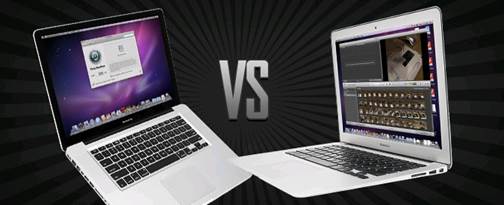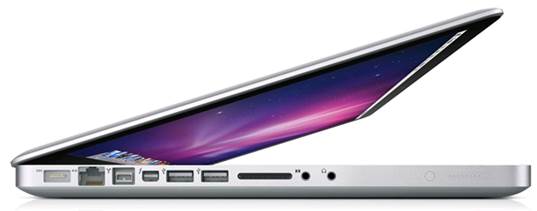Making a small laptop feel big – this
is the best choice for lightweight laptop users.
When Apple introduced the 15-inch Retina
MacBook Pro, it was only a matter of time until this breathtakingly beautiful
display made its way to other Apple laptops. Now with the 13-inch MacBook Pro
with Retina display, you can make a fascinating argument that this latest Apple
laptop is a perfect combination of performance, portability and features.
It has a 13.3-inch LED-backlit screen with
a natural resolution of 2560x1600 namely 4,096,000 pixels. To compare, the
13-inch non-Retina MacBook Pro has the resolution of 1280x800, and the
resolution of the 13-inch MacBook Air 13in is of 1,440x900.

13in
MacBook Pro with Retina Display
The Retina display is an IPS panel, allowing
for a wide 178-degree viewing angle. It also has less glare than that of the
non-Retina MacBook Pro; Apple said that it had reduced glare by 75%. We didn’t
measure the precise amount of glare, but you can see a remarkable difference.
In our review of the 15-inch Retina MacBook
Pro, we praised the image quality, and the 13-inch Retina just follows it. At
the Best (Retina) setting, it has excellent image and text quality. At any
resolution, colors are vibrant and black is deep.
A problem is that the Web doesn’t follow
this technology. Many websites don’t use high-quality images; instead, they
optimize for data throughput. Therefore, you might see websites with clear
texts but a mess of images. Another problem is whether all your programs can
make the most out of the Retina display. Apple has updated its own software,
and the list of Retina-friendly applications from third parties is increasing,
but maybe your favorite software hasn’t been updated for Retina.
Smaller than a 13-inch MacBook Air
In fact, Apple has made the 13-inch Retina
MacBook Pro smaller than the current 13-inch Air. The size of the former is 1.9x31.4x21.9
cm, as compared with the size of 1.7x32.5x22.7 cm of Air. To compare, the
non-Retina MacBook Pro has the size of 2.41x32.5x22.7 cm. However, the 113-inch
Air (1.35kg) is still more lightweight than the 13-inch Retina MacBook Pro
(1.62kg).

In
fact, Apple has made the 13-inch Retina MacBook Pro smaller than the current
13-inch Air.
Just like the 15-inch Retina MacBook
The connectors on the side of the 13-inch Retina
MacBook Pro imitate its15-inch sibling. One side has a MagSafe 2 connector, two
Thunderbolt ports, a USB 3.0 port, and a headphone jack. The other has another USB
3.0 port, an HDMI output, and an SDXC slot. Each side has a set of three air
vents which produce low-frequency sound.

The
connectors on the side of the 13-inch Retina MacBook Pro imitate its15-inch
sibling.
However, it doesn’t have any FireWire or
Gigabit Connectors; therefore, you will have to use adapters like Apple’s Thunderbolt
to Gigabit Ethernet Adapter ($39.8), or Thunderbolt to FireWire Adapter ($39.8).
Apple also provides a USB SuperDrive ($103).
Limitations
Apple offers two 2 standard configuration
models of the 13-inch Retina MacBook Pro. Both have a 2.5GHz dual-core Core i5
(Turbo Boost pushes it up to 3.1GHz), 8GB of memory and an integrated Intel HD
Graphics 4000 GPU. The $2,303 model has 128GB of flash storage, whereas the $2,701
model has 256GB.
Apple doesn’t offer much when it comes to
available options for orders. You can upgrade the processor to a 2.9GHz
dual-core Core i7 (with Turbo Boost to push it up to 3.6GHz) with $254.5. You
can also upgrade the flash storage up to 512GB or 768GB with $636 and $1,272.
Benchmarks
Macworld Lab used Speedmark 8 to see how
well the 13-inch Retina MacBook Pro performed. Generally, the new laptop
benefits from having the flash storage instead of a hard drive. It had a Speedmark
8 score of 184, 52% faster than the 13-inch non-Retina model, which has the
same processor.
In disc-intensive tests, the flash storage
of Retina MacBook Pro gave it a bigger advantage than the 5400rpm hard drive of
the non-Retina model. In CPU tests, the non-Retina MacBook Pro could fill the
performance gap.
While in almost all the tests, the 13-inch Retina
MacBook Pro beat the non-Retina model (the 2.9GHz dual-core Core i7), the
latter model beat the Retina laptop in CPU và GPU tests of Cinebench, file
compression tests, Portal 2 and Mathematical Mark.
The 13-inch Retina MacBook Pro is only 11% faster
than the current 13-inch Air with a 1.8GHz dual-core Core i5. However, remember
that, owing to the smaller profile, the processor in MacBook Air will adjust
itself down in heavy duty processing tasks to maintain the optimal operating
temperature.
As expected, quad-core Core i7 processors
and discrete graphics cards in the 15-inch Retina MacBook Pro help these models
exceed the 13-inch Retina model.
Battery life
The 13-inch Retina MacBook Pro has a 74Wh lithium
polymer battery. Apple says that the battery life can last 7 hours, depending
on the “wireless web” usage. Our battery life test is crueler. It includes
playing a video repeatedly.
In the test, the 13-inch Retina MacBook Pro
has the shortest battery life of all the current Apple laptops. It got an
average of 4 hours 40 minutes, 67 minutes shorter than the 13-inch non-Retina
model with the same 2.5GHz Core i5 processor, and 44 minutes shorter than the
13-inch MacBook Air. This is not surprising at all. It uses more power to
display more than 4 million pixels; therefore, you should make a suitable plan
for it.
Apple includes a 60W power adapter with the
13-inch Retina MacBook Pro. According to the accompanying document, there’s no
problem using the power adapter of higher wattage, but Apple warns that if you
use a power adapter of lower wattage (for example, the 45W power adapter that
comes with Air), it can’t provide enough power for the computer.
The Retina MacBook Pro uses MagSafe 2
connectors. If you have an older MagSafe adapter you want to use, you will need
a MagSafe to MagSafe 2 Converter ($14.3).
Shopping advice
So, who is the 13-inch Retina MacBook Pro for?
It’s perfect for professional users who want a large but compact digital
working environment that doesn’t sacrifice much processing performance. Air is
still the choice of users who prefer weight to other factors those who need it
on the way to work each day.
However, the 13-inch Retina MacBook Pro isn’t
much heavier than the 13-inch Air, so, if you are a demanding user who works at
a place, you won’t feel as if you sacrificed much portability with the 13-inch
Retina MacBook Pro.
Nonetheless, the non-Retina model is
cheaper, and it might be preferred by some people thanks to its FireWire and Gigabit
Ethernet ports, and a SuperDrive.

Air
is still the choice of users who prefer weight to other factors.
|
Information
·
Price: $2,304 (128GB); $2,701 (256GB)
·
Company: Apple
·
Website: www.apple.com
Speedmark 8 Scores
·
13-inch Retina MacBook Pro/Core i5 2.5GHz (late
2012): 184
·
13-inch MacBook Pro/Core i7 2.9GHz (mid 2012):
153
·
13-inch MacBook Pro/Core i5 2.5GHz (mid 2012):
121
·
13-inch MacBook Air/Core i5 1.8GHz (mid 2012):
166
·
15-inch Retina MacBook Pro/Core i7 2.6GHz (mid
2012): 275
·
15-inch Retina MacBook Pro/Core i7 2.3GHz (mid
2012): 257
Verdict
·
Advantages: Retina display; smallest pro laptop;
less glare; USB 3.0; HDMI
·
Disadvantages: lack of features; memory and
storage can’t be upgraded; only 8GB RAM
·
Ranking: 5/5
|